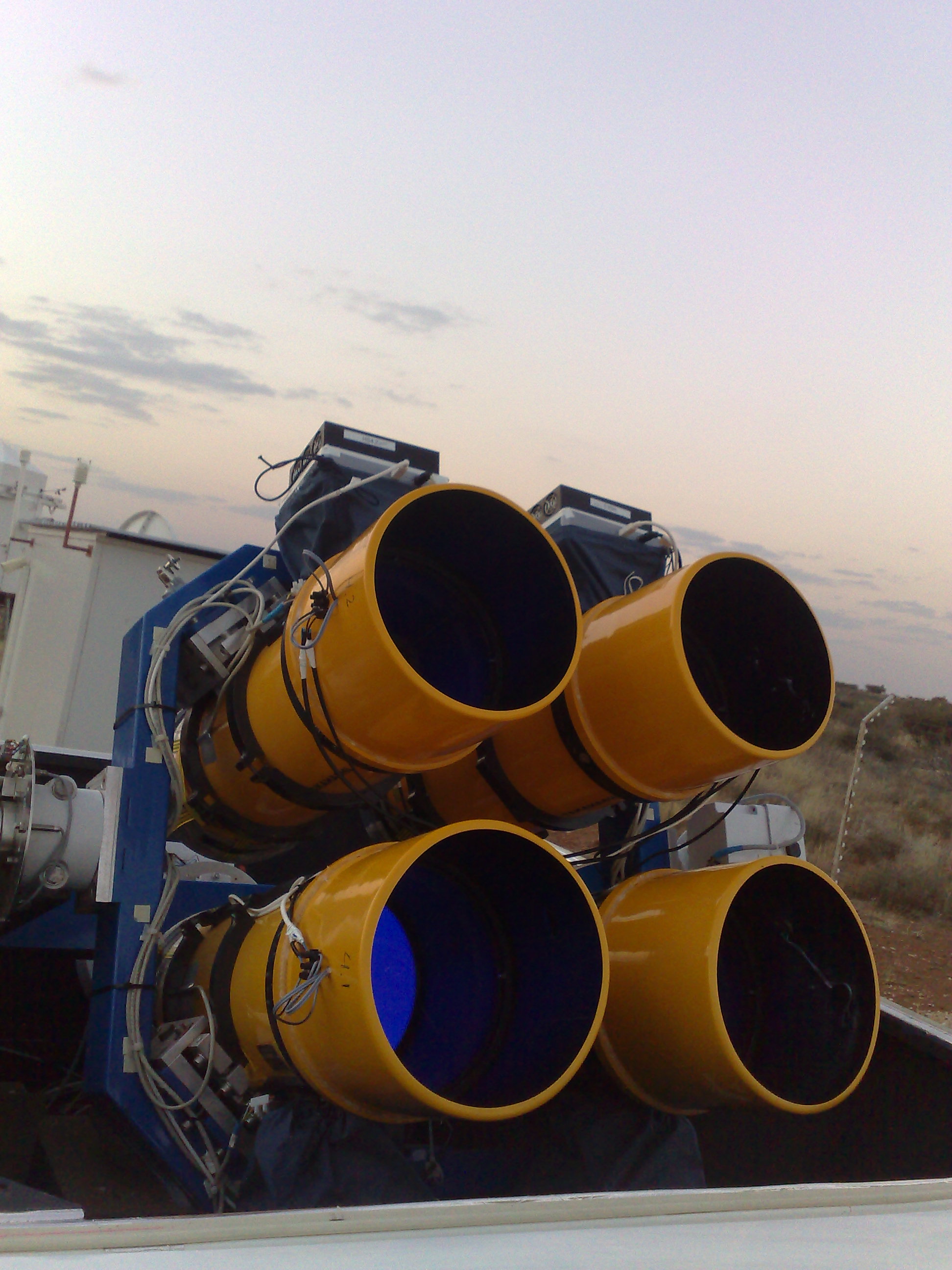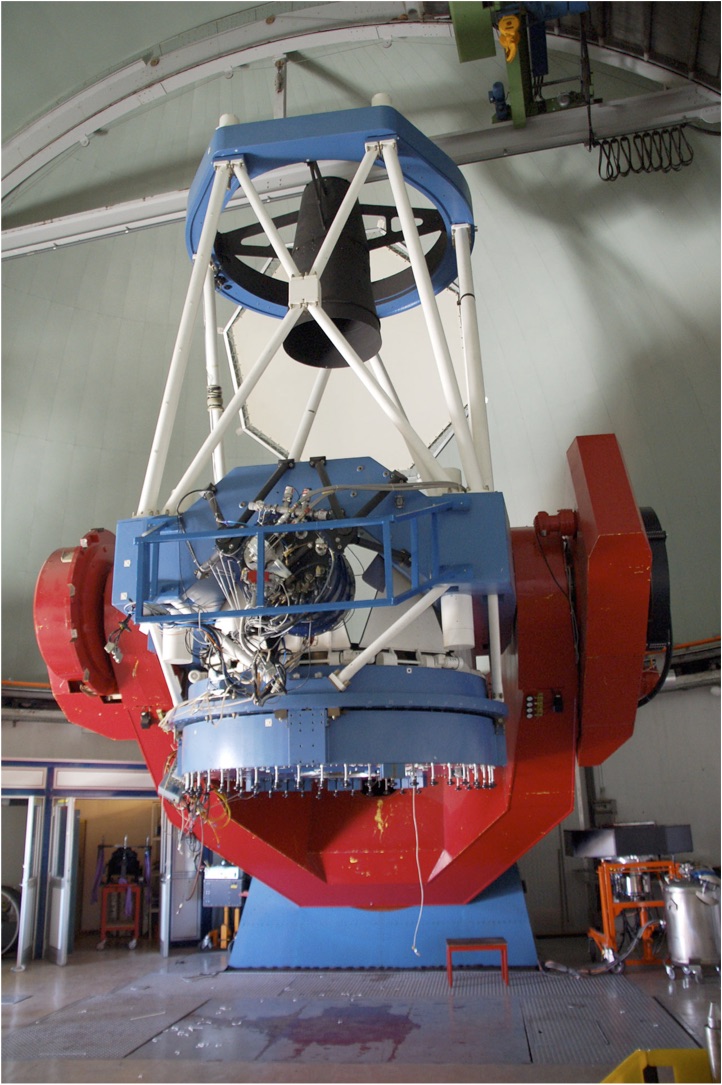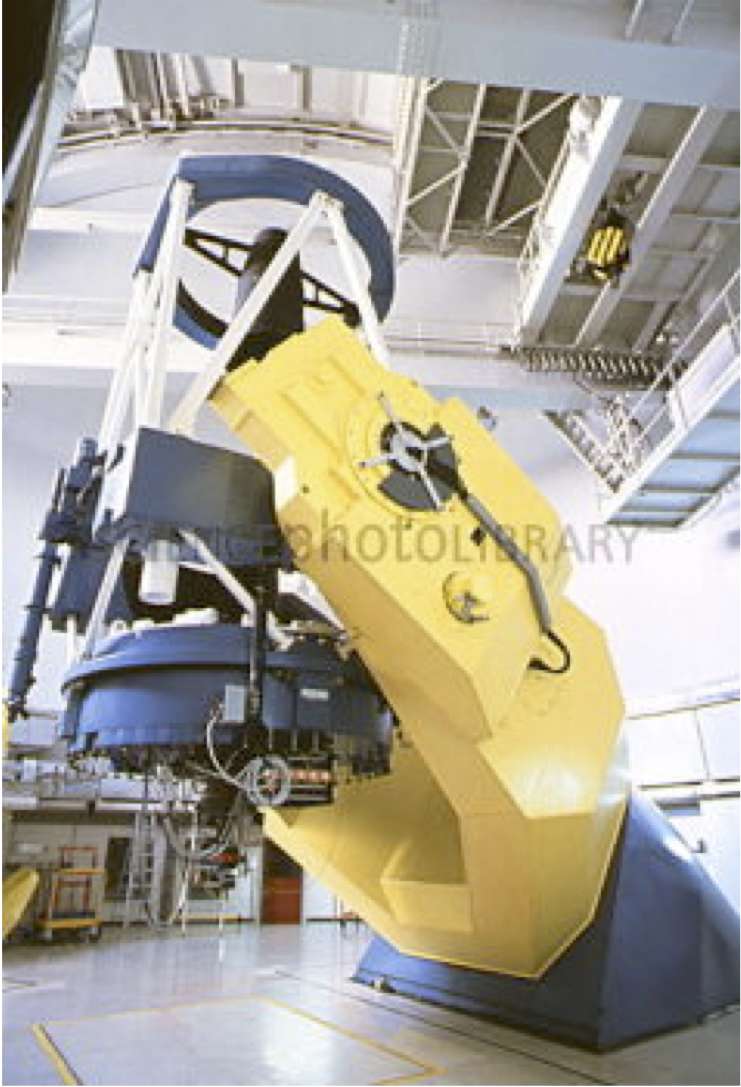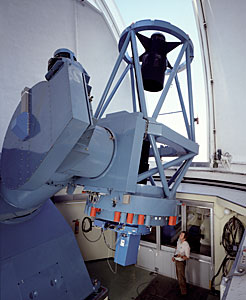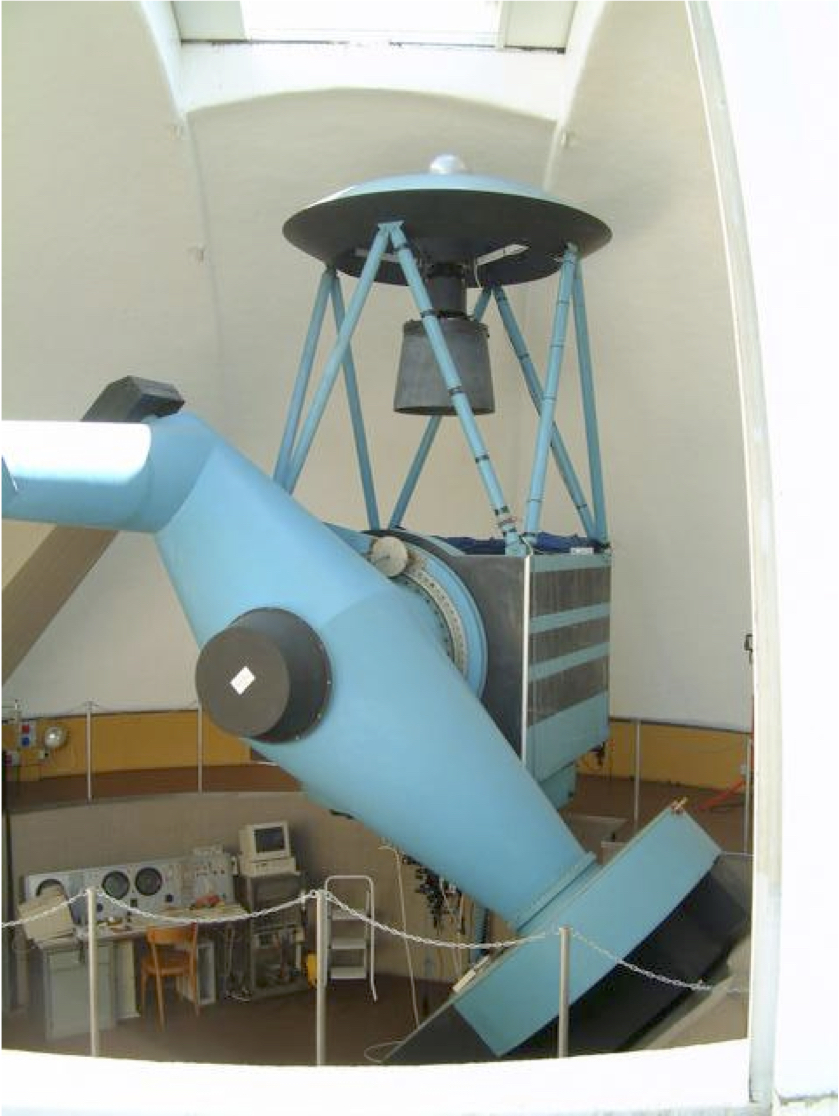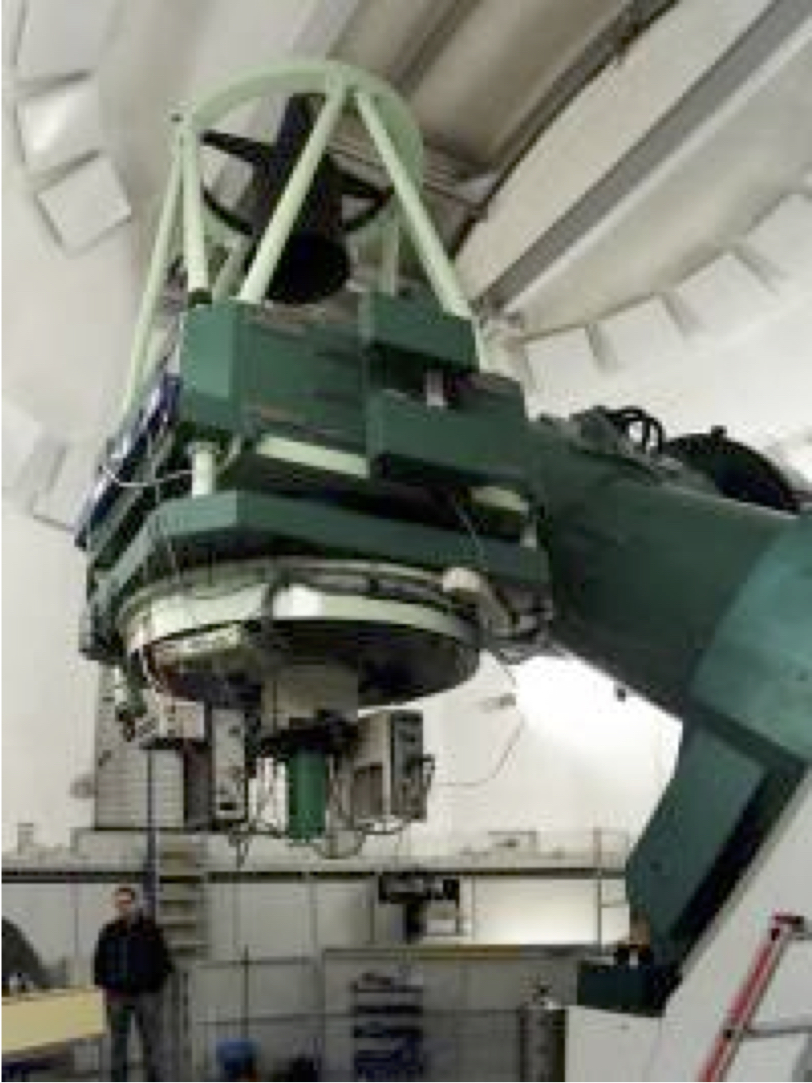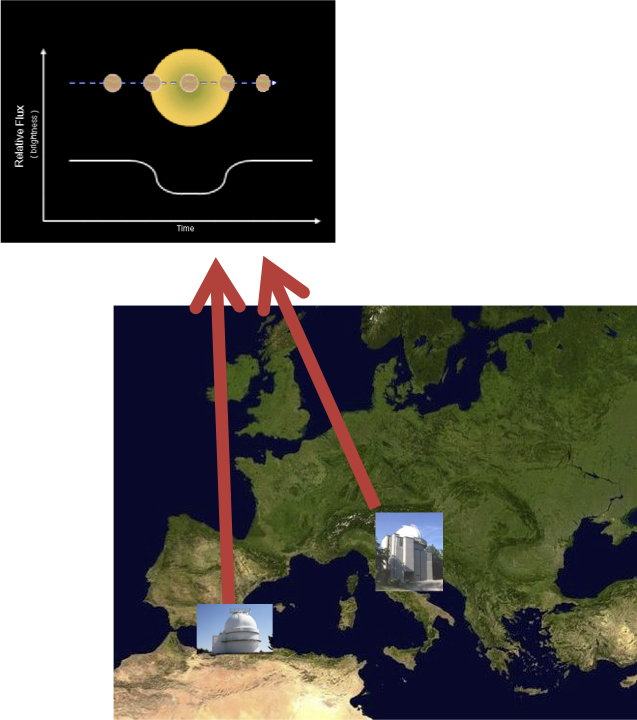|
|
|
|
|
|
|
|
|
Present Research |
|
My research is focused on various astrophysical topics. I am working on the exciting field of exoplanetary science within the HATSouth project. HATSouth is the first global network dedicated to transiting planet search. With three stations around the globe (Australia, Namibia and Chile) and 24 telescopes, providing high-precision, 24-hr data coverage on millions of stars brighter than 16th magnitude, it started operation in late 2009 and is now in the full data production phase. I take part in several aspects of the project, such as: overseeing operations, data flow and analysis, related software development, follow-up observations (photometry and spectroscopy), interpretation of the data, and communication of the scientific results. So far we have discovered 35 new transiting exoplanets.
|
|
I am leading a project to characterize transiting extrasolar planets via ultra-high-precision photometric observations of transit events. We are carrying on this project from both hemispheres by using an array of medium-class telescopes. It has already run for six seasons (2011-2016) into the southern hemisphere using the MPG 2.2-m and the Danish 1.54-m telescopes at the ESO Observatory in La Silla (Chile), and for eight seasons (2009-2016) into the northern hemisphere using the Cassini 1.52-m (Italy), the Calar Alto 2.2-m and 1.23-m (Spain) telescopes. Our strategy is to obtain very accurate differential photometry of complete planetary transit events, which are then analysed to measure the physical properties of planets and their parent stars with high accuracy. During the observations we defocus the telescope in order to reduce noise levels down to 0.5 mmag per observation. MPG 2.2 m CAHA 2.2 m Danish 1.54 m Cassini 1.52 m CAHA 1.23 m
|
|
Precise
photometric
observations of planetary transits can probe the chemical
composition of the atmosphere of transiting planets in a way
similar to transmission spectroscopy. Indeed, a dependence of
opacity on wavelength causes variations in the radius of the
planet as found from transit observations. The effect can be
big enough to measure using medium-size telescopes with
multi-band imagers, assuming they have a good spectral
resolution. It is important to obtain the observations at
multiple wavelengths simultaneously, to avoid variations in
transit depth due to unseen starspots rather than planetary
radius variations.
I am currently using two imaging instruments able to perform simultaneous multi-band photometry: BUSCA at the CA 2.2m telescope and GROND at the MPG 2.2m telescope, which utilize dichroics to split the incoming star light into four optical, and four optical plus three near-infrared wavelength intervals respectively. Thanks to these instruments, I am investigating the possible variations of the radius of a large sample of transiting planets, probing in this way the chemical composition of their atmospheres. |
|
Simultaneous multi-band observations also allow a detailed study of starspots which are occulted by the transiting planet. For a single light curve the spot radius is strongly correlated with its temperature. Multi-band light curves constrain the spot temperature relative to the effective temperature of the pristine photosphere, thus providing additional information which lifts this degeneracy.
|
|
I am involved in GAPS (Characterizing the Global Architectures of Planetary Systems), a manifold, observational long-term program granted for several consecutive semesters that will allow to characterize the global architectural properties of exoplanetary systems by using the new high-resolution spectrograph HARPS-N (High Accuracy Radial velocity Planet Searcher for the Northern hemisphere) at the TNG 3.6-m telescope. In particular, I am actively involved in the characterization of the degree of orbital alignment of a carefully selected sample of transiting planetary systems with solar-type hosts, using the traditional Rossiter-McLaughlin technique, and in the measurement of the spin-orbit alignment angle in host stars.
|
|
I am a member of the MiNDSTEp (Microlensing Network for the Detection of Small Terrestrial Exoplanets) consortium, that exploits the technique of gravitational microlensing to study the population of planets in the Milky Way. Microlensing is one of the best method to detect low mass planets at or beyond the snowline, where the bulk of planet formation is believed to occur; this regime of cold, low-mass planets is currently hardly accessible to the other detection techniques. To date around 20 planets have been detected via microlensing.
The adopted three-step strategy of survey, follow-up, and anomaly monitoring for identifying planetary signals would not succeed without the first step, on which MiNDSTEp critically relies on microlensing surveys such as OGLE or MOA, whereas only the two latter steps are realized by the MiNDSTEp observations themselves. The MiNDSTEp campaign keeps its operational efforts to a minimum by making use of the innovative approach by ARTEMiS (Automated Robotic Terrestrial Exoplanet Microlensing Search) for a fully-deterministic selection of targets, and moreover by profiting from the powerful (freely-available) tools for visualizing the acquired data in real time and the RTModel (a real-time automated anomaly modeling code). Thanks to these facilities, we contributed to many exciting discoveries based on the microlening technique.
|
|
Past Research |
|
I studied the possible relation between the mass of supermassive black hole located in the center of the host galaxies and the kinetic energy of random motions of the corresponding bulges. The main aim of this research was to probe if this relation is really a helpful tool to study the evolution of the galaxies. From our analysis emerges the fact that this relation fits the experimental data better than the other popular laws. We confirmed the validity of this statement by using four samples extracted from different catalogues of galaxies. In the framework of the ΛCDM cosmology, our relation was investigated using two galaxy formation models based on the Millennium Simulation, one by Bower et al. (the Durham model) and the other by De Lucia and Blaizot (the MPA model). Both the Durham and MPA model reproduces quite well the real data, taking into account the uncertainties of the present-day observational measurements. In order to avoid rushed conclusions on galaxy activity and evolution, the indirect inferring of M_bh from the kinetic energy of random motions should be considered, especially when applied to higher redshift galaxies. This statement is suggested by a reanalysis of the SDSS data used to study the SMBH growth in the nearby Universe. Adopting the M_bh-M_G sigma^2 relation instead of the M_bh-sigma, a radio-quiet/radio-loud dichotomy appears in the SMBH mass distribution of the corresponding SDSS early-type AGN galaxies.
|
| I studied
the gravitational lensing effects due to supermassive black
hole, with a particular attention to Sgr A*, the black hole
located at the centre of our Galaxy, which is a potentially
gravitational lens for the stars moving in Keplerian orbit
around it. In principle, this black hole, acting as a
gravitational lens, is able to bend the light emitted by stars
moving within its neighborhood, giving rise to several
phenomena: astrometric displacement of the primary image, the
creation of a secondary image that may shift the centroid of Sgr
A*, magnification effects on both images. The near-to-come
second generation VLTI instrument GRAVITY will perform
observations in the Near Infrared of the Galactic Center at
unprecedented resolution, opening the possibility of observing
such effects.
|
|
I investigated the physical nature of the MACHOs (MAssive Compact Halo Objects) detected by microlensing surveys towards the extragalactic targets, especially towards the Magellanic Clouds. Gravitational microlensing could provide evidence for the presence of baryonic dark matter, in form of compact objects (MACHOs), in the Galatic halo. It consists of the magnification of the luminous flux coming from a star due to the presence of a deflecting mass close to the line of sight, yielding an indirect observational method for the detection of non-luminous bodies. In this framework, I speculated about the existence of a new tipologies of gravitational lenses associated with gas clouds. |
| TOP |
Editor of this page: Luigi Mancini |



